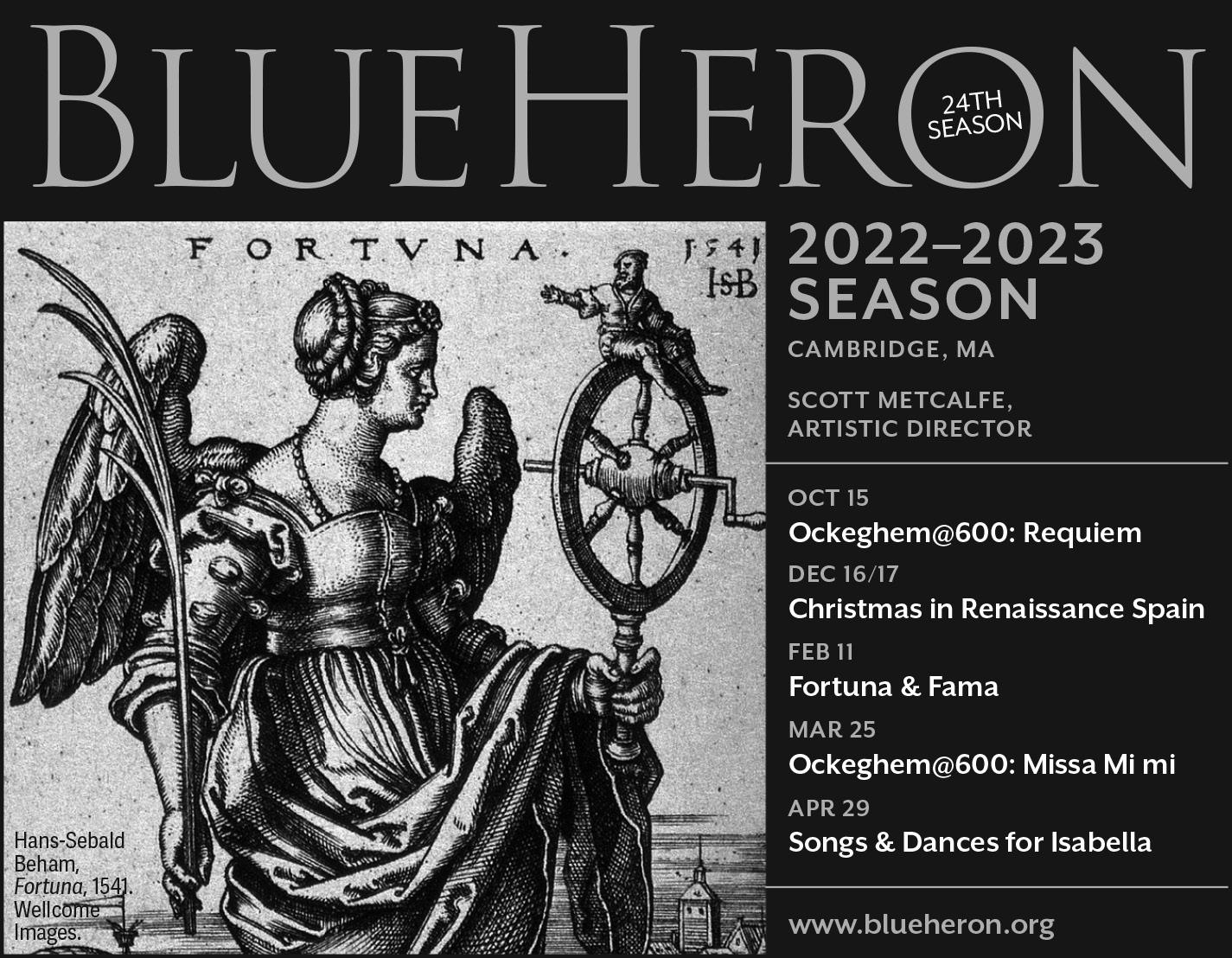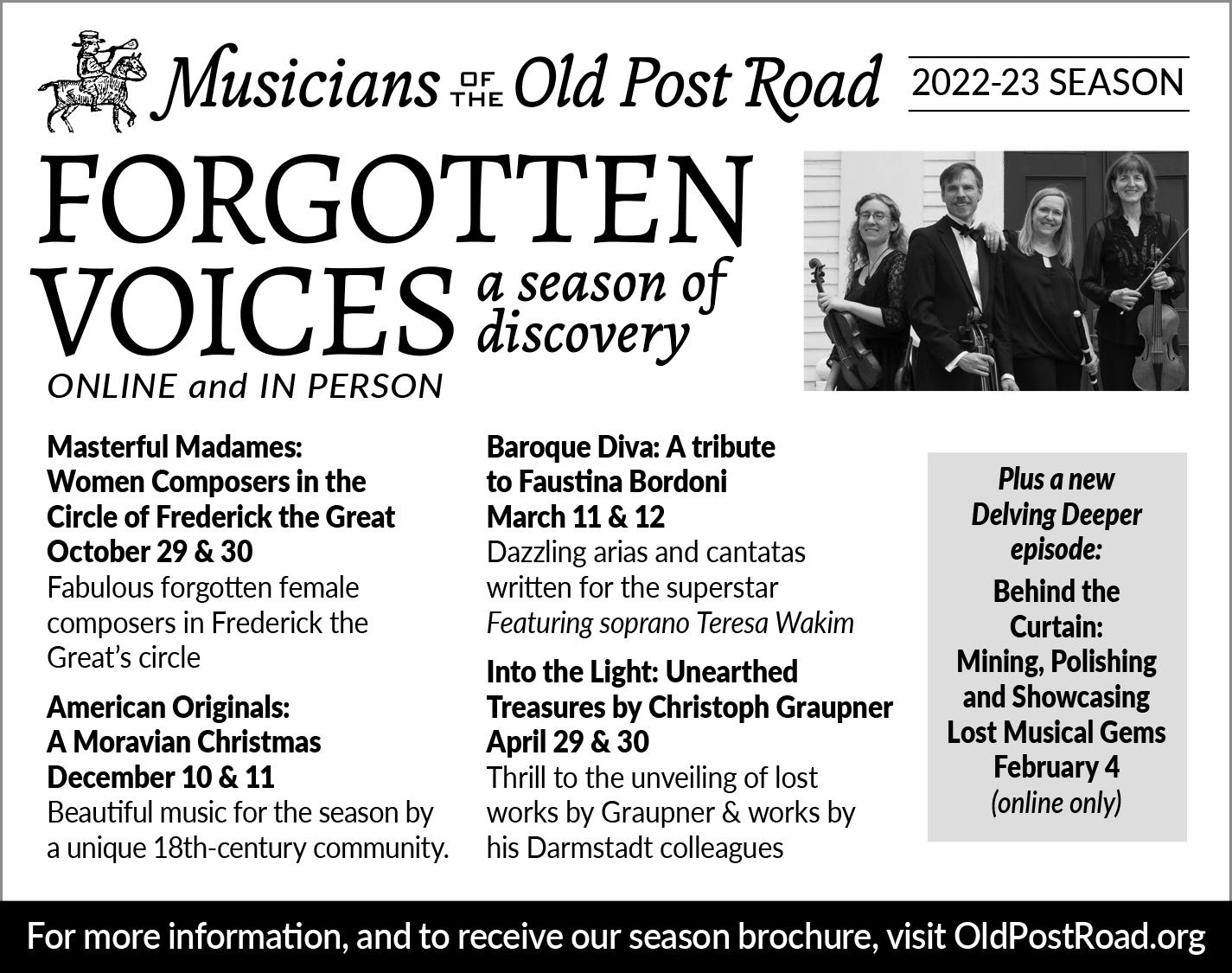
4 minute read
Program Notes
JOSQUIN DES PREZ
Engraving (1611)
Much of the greatest sacred music that comes down to us from the Renaissance celebrates the Blessed Virgin Mary. She was (and continues to be) valued as an intermediary, one who sits in the presence of Christ in heaven and may intercede with him on our behalf. This “approachable” quality helped inspire the many musical prayers and tributes to her which proliferated among Medieval and Renaissance composers, and which continue to be written today.
Four such prayers are appointed to be sung at the evening office in Catholic monastic communities, at different times of the year. The Flemish composer Orlande de Lassus revisited these antiphons time and again, in works that represent some of his most ambitious and splendid compositions.

ORLANDE DE LASSUS
Lassus had worked in Italy for much of his early life, before bringing Italian musical fashions back with him to the courts of Germany and the Low Countries. These included the polychoral technique in which choirs are split into two or more smaller groups. Alma redemptoris mater makes clever use of it, deftly separating and recombining the two choirs to create moments of climax and repose.
Josquin des Prez, the 500th anniversary of whose death was commemorated last year, was one of the most admired and respected composers of his age. The Missa Ave maris stella was widely known and very influential, a synthesis of the modern style of imitation between voices with the older style of basing music on a plainchantderived melody or cantus firmus.
The chant which underpins this mass, Ave maris stella, was a well-known hymn, still regularly used in devotions to the Blessed Virgin Mary. Its distinctive opening motif, a rising perfect fifth, can be heard at the beginning of each movement of the mass. The chant hymn provides the basis for every section, and fragments can occasionally be heard in longer notes in the tenor part (harking back to the older tradition). The tenor sings the hymn tune in full during the Osanna.


Peter Phillips notes the concision of Josquin’s method in the mass, using the four phrases of the hymn as units to be dispersed around the voice parts. He considers it “a model exercise in cantus firmus treatment, suggesting that Josquin was summing up all he knew about it at this point in his career, before moving on.”
Mary was the most common name for Jewish women of the first century. It is not surprising, therefore, to find other Maries mentioned in the gospel narratives. Francisco Guerrero’s motet Maria Magdalene was published in 1570, with a text drawn from various sources. Its first line introduces both the titular Mary and “the other Mary” (the Mother of Jesus seems to be absent). The piece narrates the discovery by these Maries of the empty tomb on Easter Sunday, and their learning of Christ’s victory over death. It introduces us to the composer’s favored sonority: two equal soprano parts atop a smoothly expressive polyphony.
Ave virgo sanctissima is today one of Guerrero’s best-known motets. Perhaps this is due to the easy and flowing way in which he embeds a canon in the two soprano parts, giving the motet a meditative, eternal quality which is sustained until its final moments. There are other delights for the attentive contemporary listener, who would have recognized a quotation of the distinctive four-note beginning of the Salve regina antiphon, prompted by the occurrence of the word Salve. Mary has also attracted devotions via her recorded apparitions to the faithful. One such appearance occurred in Mexico in the sixteenth century, causing a shrine to be established to Our Lady of Guadalupe. She is the subject of Arvo Pärt’s Virgencita, written by the contemporary Estonian composer as a “present” to the people of Mexico in advance of a visit there. “The happy anticipation of being in Mexico very soon and the name Guadalupe left me no peace,” he wrote. Pärt treats his subject with the utmost reverence, establishing a chordal sonority of gentle dissonance, building towards an impassioned climax before subsiding.
In his day, Heinrich Isaac held a preeminence second only to Josquin. By 1507, he was in the employ of Maximilian, who was presently to be crowned Holy Roman Emperor. The motet Virgo prudentissima was designed to demonstrate the soon-to-be Emperor’s piety and cast Mary as his heavenly supporter and advocate. The text, describing her as the “most-wise Virgin” combined with language from the Song of Songs, is matched by music of considerable “wisdom.” It employs multiple internal canons in which three voices sing the same music at different times, and includes a number of musical puns to delight the learned listener. Isaac dials up the awe by interspersing complicated decorative passages with monumental, slow-moving chant. There is even a self-referential moment as the musicians mention their own participation in this heavenly endorsement. Finally, the words ut sol (‘as the sun’) provide an opportunity that Isaac could not resist: a musical pun in which the syllables can be set to their corresponding scale degrees. n
—© James M. Potter, 2021

FRANCISCO GUERRERO





